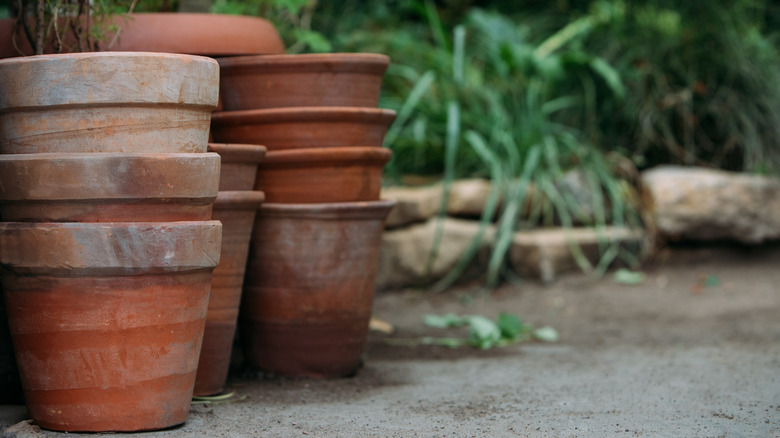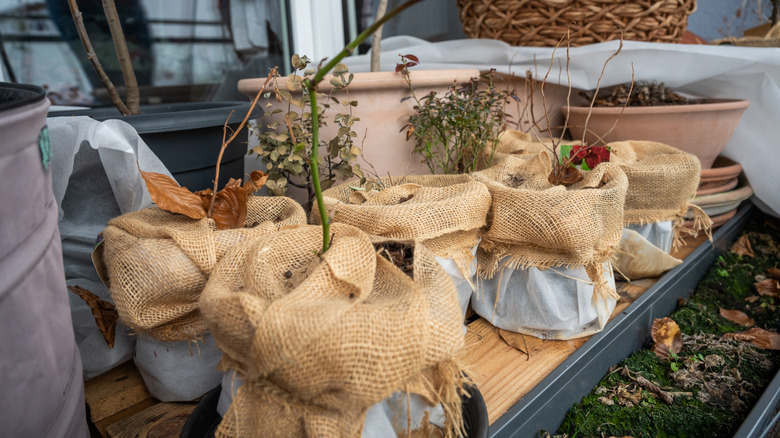Save Your Planters By Avoiding This Gardening Mistake Before The First Freeze
As the seasons change, you are probably doing everything you can to protect your plants from the cold weather. But have you ever thought about protecting your planters? Leaving pots and containers outside over the winter months is an easy mistake to make. There is always so much to do in the fall, and so little time. But leaving pots outside can cause them to crack and break. Of course, not all planters need protection. You can forget about large concrete or wooden containers. These will be ready for you come spring! However, if you have clay, ceramic, or glazed pottery planters, you run the risk of them breaking due to fluctuating weather and low temperatures.
Your planters may break because of general wear and tear. The winter rain, sleet, and winds can be pretty intense. However, they also break because the growing media is left in them, and the thawing and freezing of the soil makes it expand and damage the pot. Furthermore, certain containers, such as unglazed terracotta pots, will absorb water, which will then expand when it freezes and cause cracks.
Thankfully, it is pretty easy to avoid this. You need to empty the unused pots and give them a clean to make sure that all the soil is gone. After doing so, store your pots upside down in a shed or garage. If you can't bring them inside, turn them upside down to prevent water from pooling up inside them. You should also think about the location you are leaving them in. Where is the best place to protect them from the harsh winter weather?
How to protect planters left outdoors over winter
To avoid damage, you will also need to overwinter outdoor planter pots that still have plants in them if you are choosing to leave them outside. If you can move your containers, group them together in a sheltered spot. Then, cover them with a thermal blanket or mulch. Piling soil or mulch around the pots can be a great way to keep them warm over winter. This will also allow the roots of the plants inside the spots to stay cozy and avoid the constant freezing and thawing that can cause them to die.
For smaller pots you are keeping outside, you may wish to place them inside a larger box or enclosure and fill the gaps in with insulation. Again, mulch can be used here, but bubble wrap is also a great choice. See what you have to hand and if there is anything you can reuse from your home. By taking steps to protect them, your planters will hopefully be safe and solid when spring arrives. But if they are broken, not all is lost! You can reuse broken plant pots in the home and garden — you just may need to get a little creative.

